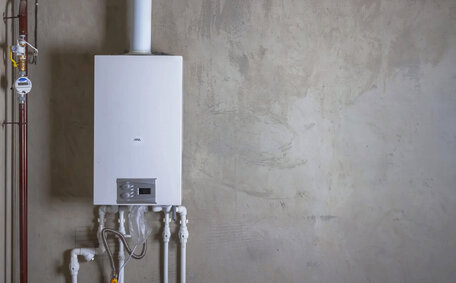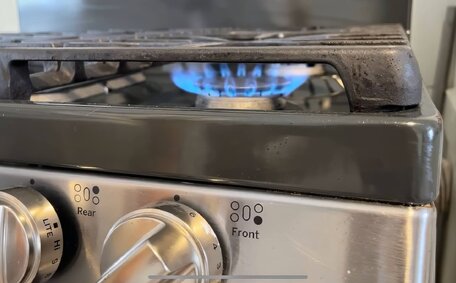Introduction to Tree Roots in Sewer Pipes
In Glenhaven, it’s a common issue for homeowners to find that tree roots have infiltrated sewer pipes, often causing substantial blockages and damage.
As tree roots sewer systems provide moisture, they can enter pipe systems through cracks and joints in old pipes. Over time, this can cause significant pipe damage and a blocked drain, resulting in unpleasant plumbing problems like sewage backups and reduced water pressure.
In this article, we’ll discuss the causes and signs of tree root intrusion, how it impacts your plumbing system and your sewer system, and the various control methods available. We’ll also explain how pipe relining technology provides a structural solution by essentially creating a 'new pipe’ within the old one.
Pipe relining not only prevents future intrusions but also reinforces the overall integrity of your drainage system.
Understanding the risk of root systems to plumbing allows homeowners to take preventive actions against tree roots, safeguarding against extensive damage. Proactive measures like using barriers can ensure trees can’t infiltrate and professional drain cleaning can get rid roots causing minor issues in your pipes, potentially leading to greater problems, preventing pipes tree root issues from escalating into significant troubles down the track. Read on as we uncover the problems caused by tree roots and discuss strategies to protect your home’s pipework for the long run.
Why Tree Roots Invade and Damage Sewer Pipes
Tree roots are naturally attracted to the nutrients and moisture found inside your sewer lines. Tiny cracks and faulty joints in ageing sewer lines provide spaces where roots enter pipe systems and potentially become invasive. This leads to significant blocked drains, and the pipe damage signifies that the pipes can become severely compromised, making it urgent to remove roots to prevent sewage backups.
As roots grow, they penetrate deeper into your sewer drain to seek out sustenance.
The Tiny, smaller roots that infiltrate sewer pipes can proliferate into large masses that obstruct water flow, highlighting the damage caused by tree roots to your drains, making prompt removal essential. Roots wrap around pipe joints, infiltrate cracks, and burrow into pipes through minuscule openings over time. The persistent root growth exerts considerable pressure on your sewer pipes, leading to damage as roots make their way through various fractures, leaks, and pipe collapses.
Sewer lines provide ideal growing conditions for opportunistic tree roots.
Nutrient-rich water and the warmth within pipes encourage root and plant growth. Nutrient-rich water and the warmth within pipes encourage root and plant growth. If uncontrolled, the need to clear roots from your drain line becomes crucial as they can become clogged by a dense mass seeking food and moisture.
Tree roots in sewer lines also secrete a sticky, gluelike substance, indicative of roots sewer interactions, that adheres to pipe walls and other debris. This gluelike byproduct can grow, capturing solids and exacerbating root invasions by causing a gradual buildup floating in the wastewater. The material mix hardens over time, contributing to narrowed pipes where blockages make their way into the drains, causing drainage issues.
By recognising the concerns that compel homeowners to remove tree branches and shrubs that can potentially breach into plumbing systems, proactive prevention steps can be taken. While recognising the signs and learning about tree root intrusion is one solution, other effective options like root barriers, chemical root inhibitors, and pipe relining can also defend against costly damage.
Early Signs and Symptoms of Tree Root Damage
Homeowners may notice a few early warning signs tree root issues cause blocked drainage, with issues arising from the top sides of the pipe due to tree roots invading sewer pipes:
- Slow draining in sinks, showers, or toilets could indicate potential blockages in drainage pipes.
- Gurgling sounds from toilet bowls or sink/tub drains
- Sewage odours originating inside your dwelling or emanating from the surrounds of your home
- Wet spots or lush patches in your garden over your sewer line
- Low water pressure
Sewage smells are one most notable indicator of a blockage inhibiting the flow water through your sewer line caused by extensive root masses.
If noticing any suspicious plumbing activity, have a professional plumber inspect lines with a sewer camera. CCTV pipe inspection quickly confirms if tree roots have infiltrated your drain systems. Catching issues early better protects infrastructure and avoids emergency drain repairs down the track.
Though symptoms may seem minor at first, they likely indicate tree roots can have already invaded pipes. Tree root extraction and pipe repairs are much simpler before extensive growth and pipe damage occurs. Act quickly upon seeing warning signs to limit the risk of invasive tree roots that may contribute to your blocked plumbing infrastructure.
Advantages of Pipe Relining to Resolve Root Damage
Pipe relining provides a structural solution for addressing and preventing further damage from roots your sewer may encounter. It involves inserting an epoxy resin coating, known as pipe lining, to cover the inside walls of old pipes. This process can offer many advantages over traditional pipe replacement:
- Root-resistant barrier - The sturdy epoxy lining prevents tree roots from breaching the sewer lines, applicable even for cast iron pipes.
- Long lifespan - Relined pipes are structurally reinforced to last decades.
- No digging needed - The relining is completed via small access points with no major excavation.
- Preserves surroundings - The relining process ensures nearby trees and landscaping are unharmed.
- Impervious - The new barrier resists wear or corrosion even under invasive root pressure.
- Improved flow - Smooth interior walls maximise your water drainage flow and line capacity.
- Greener option - Relining has a lower carbon footprint with less construction waste.
Considering the effectiveness of modern pipe relining in combating root intrusion, determining what actions to take regarding tree-related pipe deterioration becomes straightforward, favouring relining over full drain replacement. When it comes to your home’s upkeep, protect the plumbing long-term and avoid expensive repairs with proactive pipe relining from a professional plumber.
How Pipe Relining Prevents Future Root Intrusions
Pipe relining is the most effective long-term solution for preventing future tree root intrusions. The seamless epoxy barrier coats the inside of ageing pipes, thwarting roots sewer line intrusions by creating a smooth, impenetrable new pipe within the old one. This negates cracks and joints for tree roots to penetrate, allowing homeowners to effectively remove trees and accumulated roots from their drain systems.
The durable resin holds up against invasive root pressure without corrosion or wear. Roots simply have nowhere to grow into, as relined pipes lack the leaks, fractures and protrusions roots exploit. The refurbished pipeline remains structurally sound for decades.
The relining process also maximises pipe capacity and water flow. Smooth interior walls increase drainage rates and reduce blockage risks. With no openings for roots to enter and unobstructed water flow, when comes to safeguarding your drainage system, future invasions are virtually impossible.
The flexibility of the epoxy allows the relined pipe to shift or settle without cracking to compromise its root-resistant integrity. It provides a seamless, robust barrier tailored to the unique dimensions of existing pipes.
Compared to pipe replacements, relining is faster, greener and less invasive to enact. And unlike ongoing root removal maintenance, it permanently fortifies pipes against further intrusions. Pipe relining is the best preventative measure for resolving tree root issues for good.
The Pipe Relining Process Step-by-Step
Pipe relining is carried out using Cured-In-Place Pipe (CIPP) technology for a seamless and non-invasive solution. Here is the process step-by-step:
- Initial CCTV inspection - A camera probe surveys drainage pipes interiors to identify damaged sections and custom-design the relining.
- Pipe cleaning - employing our expertise, we use high-pressure water jetting, a method we use to ensure meticulous cleansing and unblocking of your plumbing of the old pipe, extraction of debris and priming of surfaces.
- Resin wetout - The felt CIPP liner is saturated with a special two-part epoxy resin, which can used to ensure durability.
- Insertion - The saturated liner is inserted through an access point like a manhole.
- Inflation - The liner is inflated against pipe walls using air pressure.
- Curing - The resin is cured, usually with steam or hot water to harden the material.
- Cool down - The new pipe is cooled before trimming ends at access points.
- Final CCTV inspection - A camera verifies the relined pipe integrity.
The result is a smooth, seamless 'pipe within a pipe’ offering decades of protection against root intrusion. Pipe relining prevents future root damage thanks to its durable epoxy barrier. With no cracks or leaks for roots to exploit, root intrusions are effectively eliminated.
Aftercare and Prevention Tips
To protect newly relined pipes from future root invasion, there are a few key prevention tips to follow:
- Conducting annual CCTV inspections is vital for monitoring your drainage system’s condition and preventing unseen damage.
- Landscape with foresight and plant trees sensibly, opting only for small vegetation near pipelines to prevent root interference
- Invest in structures like robust root barriers, which can effectively prevent tree root invasions, researching tree root behaviour to effectively curb root encroachment along the pipe exterior
- Avoid planting trees with aggressive root systems near pipelines to prevent potential invasions.
- Natural root inhibitors like baking soda and rock salt can be used to curb root growth near pipes.
- Have main sewer lines routinely cleaned using hydro jetting for optimal maintenance
Vigilant maintenance helps sustain the integrity of relined pipes and mitigates damage caused roots infiltrating the system. At the first sign of drainage issues in your sewer main, have a professional inspection to check for root re-growth and keep roots out your drain pipes, preventing potential damage. catching problems early better enables rapid response to clear out your pipes and prevent major blockages or damage.
With our expertise in pipe maintenance and repairs, we ensure that your relined plumbing stays resistant to potential root intrusions.





